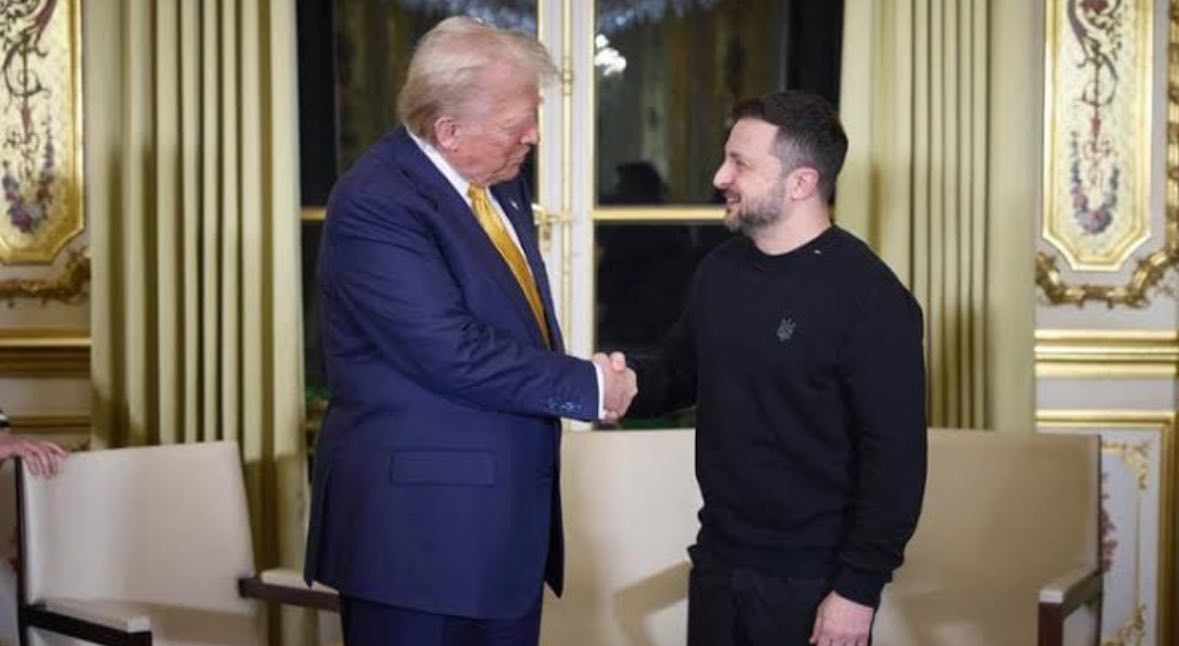If Trump supports Zelensky
If Trump supports Zelensky
If Kamala Harris had won in November, Ukraine would have been lucky, although this victory alone would not have guaranteed anything for Ukraine.
To increase the chances of success, Kyiv needs to adopt a winning strategy.
For the coming months, Ukraine should focus on reducing Russian attacks while building military capacity for an offensive in 2025.
This approach of ‘hold, build, and strike’ requires a rapid increase in Western support for success, and Ukraine now needs resources for a new campaign in less than a year.
Ukraine has already taken some steps to develop offensive capabilities.
Kyiv has made significant investments in drone production, which have proven capable of shaping military outcomes and hammering Russian assets.
Ukrainian naval drones have taken parts of the Russian Black Sea fleet out of action and reopened maritime trade in the Black Sea.
Domestically produced attack drones have disrupted Russian frontline forces, and long-range attack drones have destroyed Russian military infrastructure and support.
Kyiv currently needs to further expand its drone warfare capabilities and increase domestic production of cruise missiles, artillery, armor, and other military equipment. With sufficient financial support from the West, Ukraine can properly mobilize its military-industrial base for war.
Mobilizing more forces is as important as providing material aid.
It is entirely possible for Ukraine to enlist about 300,000 military personnel it needs without severely damaging the country’s economy.
Recruitment will be necessary both to fill units depleted by battlefield losses and to form new units, also allowing exhausted forces to rotate off the front lines.
If Ukraine starts a recruitment campaign today, new forces will be trained sufficiently to replenish frontline units within six months.
Some of Ukraine’s new units will need six to nine months of additional training and some battlefield experience to be ready to serve as shock and strike forces for the 2025 offensive.
Given the tight timeline, recruitment efforts must begin immediately.
Western countries also play a vital role. The Biden administration and the national security team, led by Harris, were committed to continuing support for Ukraine’s military strategy to initiate operations against Russia in 2025 and to efforts to ensure continued support for Ukraine even during the approximately two-month transition period until the Trump administration takes office.
Meanwhile, Ukraine must demonstrate its commitment to launching another offensive in the summer of 2025 by mobilizing its manpower and industrial base. If Ukraine does this, additional material support could become an easier political sell in the United States.
To implement Kyiv’s strategy, Western aid must expand in size and scope. In addition to providing sufficient equipment, Ukraine’s operations require increased Western tanks, armored vehicles, logistical and engineering support, artillery systems, multiple launch rocket systems, air defense systems, and electronic warfare systems to equip at least 12 new brigades, approximately 60,000 troops. A U.S.-authorized lend-lease program could facilitate equipment transfers.
Some resources may be drawn from U.S. stockpiles in Europe or even directly from overseas operational units.
Stockpiles should be replenished over the next few years. Although reducing U.S. supplies is a calculated risk, it’s worth it. It’s better to provide Ukraine with the resources it needs to win this fight than to store vital equipment for a remote contingency.
Part of the solution is repairing the Western equipment Ukraine has already received. Ukraine should be able to repair damaged Western-produced equipment domestically rather than relying on repair facilities in Europe.
Many pieces of equipment simply need basic services and replacement parts. However, Washington stubbornly resists contracting with U.S. defense companies to perform repairs within Ukraine.
This is partly due to concerns that the Russian government might perceive the presence of American personnel in Ukraine as an escalation of the war and partly due to concerns about the safety of these individuals in a conflict zone.
Washington’s ban should end immediately. Currently, about 30 to 40 percent of Ukraine’s equipment is operational.
If the U.S. lifts its restrictions, this rate could increase to 90 percent, tripling the available equipment for Ukraine’s next campaign. Any strategy to help Ukraine win during Trump’s presidency is much more challenging.
Ukrainian forces also need training in combined arms warfare to successfully carry out a new offensive. Such a program could be implemented in Ukraine with the presence of seasoned military personnel from the U.S., the UK, and other NATO countries in Ukraine, teaching Ukrainian soldiers Western military planning and decision-making processes.
Ukrainian service members can overshadow foreign trainers and eventually learn to lead training programs themselves, ensuring that training content can reach the entire Ukrainian military.
The purpose of the training is not to teach Ukrainian soldiers how to fight the Russians; they have been doing that for two and a half years. Instead, its focus will be on planning for a major new offensive.
Ukrainian forces should receive better tactical training, including for night combat, as well as training from former NATO military members on how to design zigzag complex offensive operations, especially how to break through heavy defenses. Several brigades need to work seamlessly and in coordination to respond effectively to inevitable changes on the battlefield.
A full brigade, from leadership down to squads, can complete this training in eight weeks. With program expansion, several brigades can be trained simultaneously, more trainers are active, and new units are available to rotate forces off the front lines.
In nine months, a number of brigades can be ready for a major offensive. No investment in a weapon or a piece of technology is as crucial to Ukraine’s success as good training, and this process should start immediately.
President Volodymyr Zelensky’s government must compel Washington to prioritize this training plan.
Large-scale combined arms training for Ukrainian personnel did not exist during the war. Kyiv should pursue this goal right now. Of course, all of this is achievable if the Trump administration is convinced to do so.

